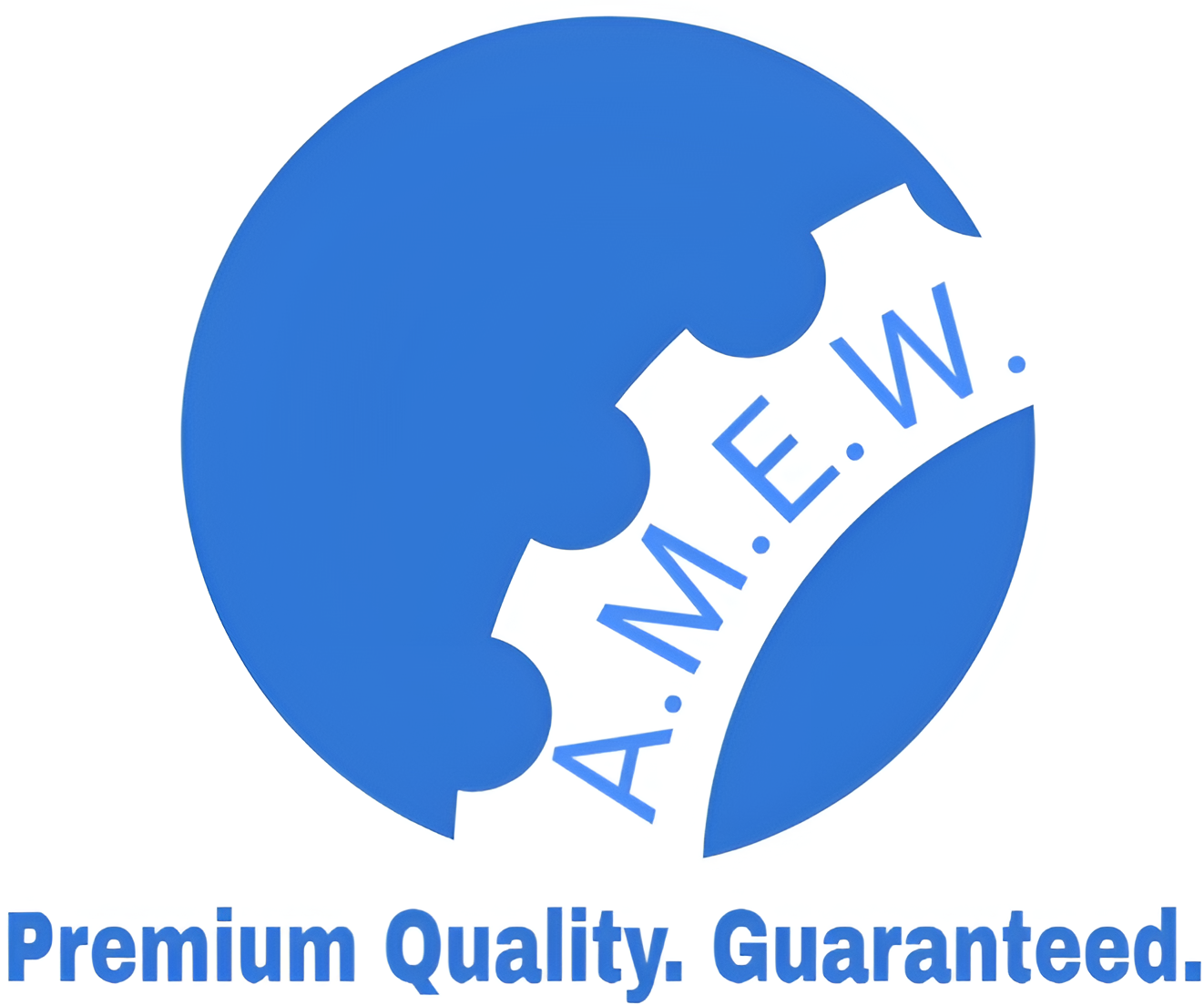Stainless Steel Gear Blanks: The Foundation of High-Performance Manufacturing
Stainless steel gear blanks are an essential component for countless manufacturing processes. Whether you’re a procurement manager sourcing reliable parts, a manufacturer optimizing your workflow, or an engineer specifying requirements, understanding stainless gear blanks can spell the difference between success and setback. This post examines the properties, applications, and advantages of stainless steel gear blanks, ending with a practical selection guide for making the right choice.
Unlocking the Power of Stainless Steel Gear Blanks
Gears are at the heart of countless machines, translating motion, transmitting power, and ensuring precise operations. The “gear blank” is the raw, uncut form that forms the foundation for custom-cut or finished gears. When that blank is made from stainless steel, it brings unique benefits that elevate performance in demanding settings.
Stainless steel gear blanks are pre-formed discs or cylinders, typically crafted from high-grade stainless alloys. Once specialized gear teeth are cut, these blanks become the backbone for applications—from industrial transmissions to precision robotics.
What you’ll discover in this post:
- Why the composition of stainless gear blanks matters
- Where and how they’re used across industries
- How to choose the right blank for rigorous applications
- Key advantages over traditional materials
- Actionable steps for sourcing and specification
Key Properties of Stainless Steel Gear Blanks
Corrosion Resistance
Stainless steel is renowned for its exceptional resistance to rust, corrosion, and staining. Thanks to its high chromium content (generally 10.5% or more), it forms a passive layer on the surface that protects against oxidation. This makes stainless gear blanks ideal for environments where moisture, chemicals, or challenging weather conditions are a factor.
Durability and Toughness
One of the hallmarks of stainless steel gear blanks is their durability. These components withstand cycling loads, impacts, and harsh operational environments without deforming or wearing prematurely. Stainless alloys like 304 and 316 provide robust mechanical strength, maintaining their form and function under sustained use.
Machinability and Consistency
While stainless steel is known for toughness, modern alloys offer improved machinability. This allows gear manufacturers to achieve precise tolerances and surface finishes, highly prized in automotive, aerospace, and robotics applications.
Temperature Stability
Temperature fluctuations are common in industrial settings. Stainless steel gear blanks retain their strength and integrity across a broad temperature range, from freezing conditions to intense heat. This makes them suitable for engines, turbines, and outdoor machinery.
Hygiene and Cleanability
For industries like food processing or pharmaceuticals, hygiene isn’t optional. Stainless steel’s non-porous surface resists bacteria buildup and is easy to sterilize, ensuring compliance with strict health standards.
Where Are Stainless Steel Gear Blanks Used?
Few materials are as versatile as stainless steel. Here are some leading application areas for stainless gear blanks:
Aerospace and Aviation
Precision, reliability, and longevity are non-negotiable in aerospace. Stainless gear blanks are commonly used in engine components, landing gear systems, and actuation assemblies thanks to their resistance to stress and fatigue.
Automotive and Transport
Automotive manufacturers rely on stainless steel gear blanks for transmissions, steering systems, and fuel pumps. Their wear resistance and corrosion-proof qualities mean longer lifecycles and fewer replacements.
Food and Beverage Processing
Sanitation regulations in food handling are strict. Stainless steel gear blanks are integral to food mixers, bottling lines, and conveyors, all of which benefit from the material’s cleanability and non-reactive nature.
Medical Devices
Reliability and hygiene matter dearly in medical technology. Stainless steel gear blanks form the basis of surgical instruments, diagnostic equipment, and mobility aids.
Marine and Offshore
Water, salt, and humidity pose a triple threat to most metals—but not stainless. Boats, oil rigs, and pumps use stainless steel gear blanks for drives and winches, trusting in their corrosion-resistance under constant exposure to the elements.
Robotics and Automation
Tight tolerances and consistency are key in robotics. Stainless gear blanks are the go-to foundation for motion-control applications, automated arms, and precision devices.
How to Choose the Right Stainless Steel Gear Blank
Selecting the wrong gear blank can derail projects and balloon costs. Consider these points when making a decision:
1. Application Environment
Will the gear operate underwater, in acidic settings, or in sterile environments? Match the stainless alloy grade to the environment. For example, 316 stainless is best for marine use due to extra molybdenum, while 304 suits dry or mildly corrosive spaces.
2. Mechanical Requirements
Assess the torque, speed, and load conditions the gear will face. Higher strength alloys (like 17-4 PH or 440C) suit high-stress or high-precision roles, while lower grades suffice for lighter-duty applications.
3. Machining and Finish Needs
Does your application require ultra-tight tolerances or a specific surface finish? Evaluate the machinability of the stainless grade and choose gear blanks with optimal hardness for future processes.
4. Regulatory and Compliance Needs
Certain industries demand certifications for hygiene (food, pharma) or strength (aerospace). Seek suppliers who can provide traceable material certificates and meet ISO, ASTM, or DIN standards.
5. Size, Shape, and Customization
Gear blanks come in varied sizes, diameters, and thicknesses. Confirm that your supplier can deliver custom or standard sizes, in both solid and ring forms for your application.
6. Supplier Reliability
Work only with reputable providers who have strong quality control procedures and robust logistics systems to minimize downtime and supply risk.
The Advantages of Choosing Stainless Steel Gear Blanks
Stainless steel often represents a greater initial investment than alternatives like carbon steel, bronze, or plastic. However, its long-term value and reliability far outweigh short-term costs. Here’s why:
Superior Longevity
Stainless gear blanks have a service life that far surpasses that of most other materials. Reduced maintenance and fewer replacements lead to lower total ownership costs.
Reduced Contamination and Maintenance
Thanks to stainless steel’s non-porous nature, gears stay cleaner longer and are easier to service. This reduces bacterial contamination and saves both time and money in regulated environments.
Enhanced Aesthetics and Branding
The smooth, gleaming surface of stainless is visually appealing and projects a high-quality image for your products.
Universal Compatibility
Stainless gear blanks integrate easily with other components, supporting diverse assembly and retrofitting scenarios.
Environmental and Economic Efficiency
With the increasing push for sustainable manufacturing, stainless steel gear blanks stand out. They’re highly recyclable and promote material efficiency by lasting longer than alternatives.
Maximizing Reliability and Efficiency in Manufacturing
Gear performance begins with smart material selection. Stainless steel gear blanks contribute strength, hygiene, and longevity across multiple sectors—from food production lines to next-gen robotics. When chosen wisely, these foundational parts support productivity gains, lower lifecycle costs, and greater consistency in demanding applications.
Understanding your specific operational demands, mechanical needs, and compliance considerations is essential. Engage reputable suppliers and be rigorous about traceability, certifications, and after-sales support.
Want to enhance your manufacturing reliability? Consider stainless steel gear blanks for your next project and watch efficiency and quality climb.

